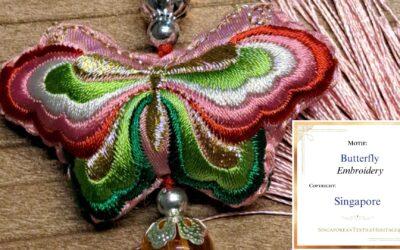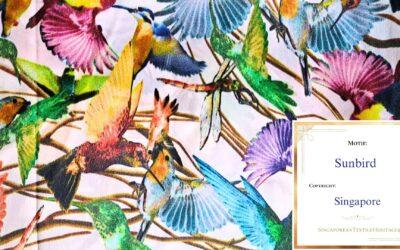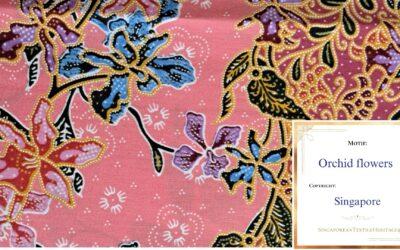
Peranakan motif
Singapore
“Cultural diversity, unity in dynamism and peaceful coexistence among nations”
Inspired by Singapore’s rich cultural heritage, the Singaporean Batik showcases vibrant motifs influenced by Chinese, Indian, and Malay civilizations. These motifs depict lush green tendrils and tropical flowers, exemplifying the diverse and harmonious society of Singapore. With elements from Indian-Malay artistic styles, the botanical shapes represent iconic plants such as Lipstick Plant, Malayan Ixora, Pandan flower, and Common Dianella. The art of Singaporean Batik has preserved this multicultural symbolism for centuries, becoming a source of pride and inclusive representation in Singaporean society. The government actively supports and recognizes cultural heroes who conserve this art through galleries, cultural centers, and inter-generational family businesses, like Basharahil Bros Batik in Kampong Gelam, Batik Emporium, and Kebaya gallery by Ratianah.
NOTE: All contents (text and images) are protected by Singapore cultural property law. This documentation is intended for educational purposes and to support the preservation of Southeast Asian textile heritage. Any use of published materials is permitted only with attribution to this website as the original source.
Wisdom & Inspiration


Peranakan clothing consists of a blouse known as “baju kabaya” and a batik skirt known as “sarong”. Back in the days, Peranakan ladies would often buy cloth patterns that they like and bring it to a seamstress to have it made into clothes (Source: Honeylemons. Wikimedia)
SPLENDID LEGACY
Singaporean Textile Heritage
Textile heritage reflects the pride of rich cultural legacy of Southeast Asian communities. Discover the vibrant colors, intricate patterns, and exquisite craftsmanship that have been passed down through generations. Personal and philosophical wisdom showcased in the beauty of Southeast Asian textiles allow you to embrace the legacy of the UNESCO Silk Road. Explore and immerse yourself in the essence of elegance and captivating world of Southeast Asian Textile Heritage.




